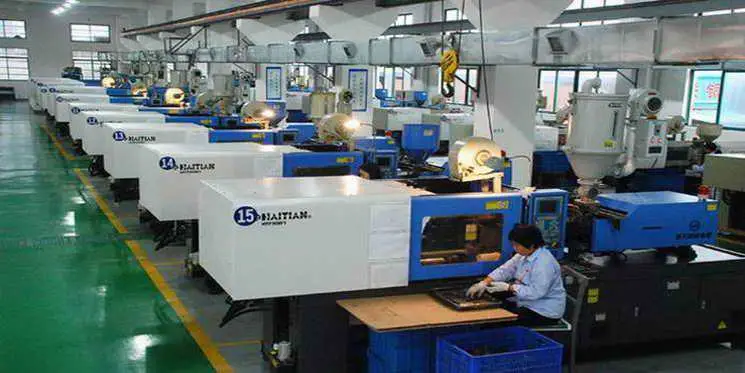Manufacturing Group (China) Limited is a Vacuum forming company in China, has handled hundreds of Vacuum forming manufacturing projects for clients. We focus on execution and quality assurance, and are always customer-centered, process driven, and enthusiastic about China Plastic Vacuum forming Manufacturing.
We are your Ideal Partner in Plastic Vacuum forming Manufacturing. With more than 18 years of experience in the industry. Our creative team of engineers takes care of every detail to make sure you get the highest quality parts at low cost. It all starts with filling out our Request for Quote form. We take every step possible to ensure the lowest price with the highest quality. You’ll receive your quote quickly, allowing you to make the most of your time.
Vacuum forming is a very economical method for producing plastic parts. The vacuum forming process can produce parts in various configurations in small and large quantities at a reasonable price. This process involves the controlled heating of plastic materials to a temperature where it is flexible enough to be altered by the shape of a mold with the help of vacuum. In this method, the heated plastic sheet is forced against the mold by the air pressure differential created by pulling a vacuum between the sheet and the mold.
How does vacuum forming work?
- Clamps: Place a piece of plastic in the open frame and clamp it in place.
- Heat: Use a heat source to soften the plastic sheet until it reaches the proper molding temperature and becomes pliable.
- Vacuum: The heated flexible plastic sheet and frame are lowered over the mold and pulled into place by the vacuum on the inner side of the mold. The mold has small holes drilled in it so that the vacuum can pass through the holes to draw the thermoplastic sheet onto the mold.
- Cooling: Once the plastic is drawn around the mold, it is allowed to cool. For larger workpieces, fans and cooling mist are sometimes used to speed up this step in the production cycle.
- Demolding: After the plastic has cooled, it can be removed from the mold frame.
- Trimming: Excess material needs to be cut from the finished part, and the edges may need to be trimmed, sanded, or smoothed.
The heating and vacuuming steps are fast and usually only take a few minutes. Depending on the size and complexity of the part being manufactured, cooling, trimming, and making the mold can take longer.
Applications of Vacuum Forming:
Vacuum forming can be used for a wide range of manufacturing applications, from small custom parts produced on benchtop equipment to large parts made on automated industrial machinery. It is often used in the production of blister packaging, handmade boxes, closures, workboxes, fruit and food boxes, and other products. Almost all thermoplastics can be manufactured by vacuum forming, including PVC, PTE, PS, PP, etc.
Production characteristics of Vacuum Forming:
Vacuum forming offers several processing advantages over other forming processes. Relatively low-cost tooling can be achieved using low forming pressures. Since the vacuum forming process uses low pressure, the requirements for the mold material are not high, and the mold manufacturing time is relatively short. Therefore, it is a relatively economical production method to produce prototypes or to custom make small quantities of large parts. It can be used for continuous automated production of high-volume items such as disposable cups.
Unlike other thermoplastic forming processes, vacuum forming uses extruded plastic sheets. For vacuum forming, secondary processing may be required to trim the formed sheet to complete the finished part. The trimmed waste can then be reground and recycled.
Our Vacuum Forming Products
 China Vacuum Forming China Vacuum Forming
China Vacuum Forming China Vacuum Forming  Custom Vacuum Forming Custom Vacuum Forming
Custom Vacuum Forming Custom Vacuum Forming  Vacuum Forming Company Vacuum Forming Company
Vacuum Forming Company Vacuum Forming Company  Vacuum Forming Factory Vacuum Forming Factory
Vacuum Forming Factory Vacuum Forming Factory  Vacuum Forming Manufacturer Vacuum Forming Manufacturer
Vacuum Forming Manufacturer Vacuum Forming Manufacturer  Vacuum Forming Parts Vacuum Forming Parts
Vacuum Forming Parts Vacuum Forming Parts  Vacuum Forming Products Vacuum Forming Products
Vacuum Forming Products Vacuum Forming Products  Vacuum Forming Services Vacuum Forming Services
Vacuum Forming Services Vacuum Forming Services  Vacuum Forming Supplier Vacuum Forming Supplier
Vacuum Forming Supplier Vacuum Forming Supplier  Vacuum Forming Vacuum Forming
Vacuum Forming Vacuum Forming
https://www.china-plastic-supplier.com/index.php/other-capacities/vacuum-forming.html#sigProIddfbf426ba0






